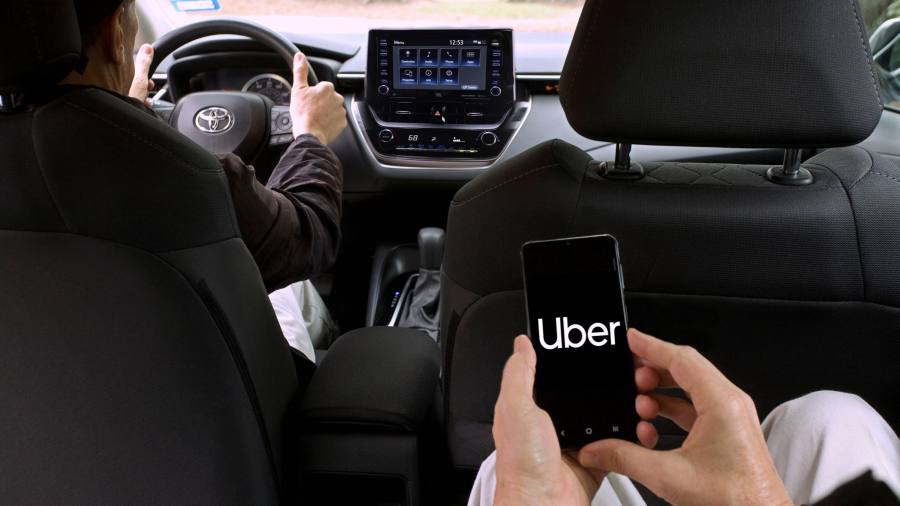
Uber has said passenger numbers are higher than before the pandemic and issued a bullish message about demand for its delivery and ride-hailing services, as its third-quarter revenues exceeded analysts’ expectations.
It comes as the global ride-hailing group on Tuesday said it had this week “resolved all outstanding HMRC VAT claims” related to the change in classification of its UK ride-hailing drivers as workers rather than contractors, following a long legal battle. Uber will pay £615mn to HMRC, the UK tax authority, to settle the case.
Chief executive Dara Khosrowshahi said Uber had benefited from “cities reopening, travel booming, and, more broadly, a continued shift of consumer spending from retail to services”, with October set to be its strongest month ever for mobility and total company bookings.
On a conference call with analysts, Khosrowshahi said the company had not seen “any signs of consumer weakness” despite high inflation across its markets.
“We’ve specifically looked at Europe, with European economies leading the way in terms of inflation and again, we’ve not observed any weakness,” he added.
The upbeat message propelled New York-listed Uber shares up 15.3 per cent in early trading. Shares of European peers Delivery Hero and Just Eat also rose, by 9.6 per cent and 8.4 per cent respectively.
However, Uber became the latest US tech group to warn about the impact of the strong dollar. On Tuesday, San Francisco-based Uber said the rising dollar would result in a $1.8bn hit to gross bookings in the fourth quarter.
This follows similar warnings from other US multinationals this earnings season, including Amazon and Shopify, as the dollar has risen almost 16 per cent this year on the back of aggressive interest rate rises from the Federal Reserve.
Against a weak comparison from 2021 when Covid-19 shutdowns hit the company’s income, Uber’s revenue rose 72 per cent in the three months to September 30 to $8.3bn, ahead of consensus estimates of $8.1bn according to data from S&P Capital IQ.
Overall, monthly active users of Uber’s services increased 14 per cent year on year to 124mn, with mobility customers up 22 per cent — which includes ride-hailing, bikes, scooters and booking public transport — and a strong recovery in airport trips. While trips per active customer rose to 5.3 per month, usage remains behind pre-pandemic levels of 5.7 trips.
Net losses halved from $2.4bn a year ago to $1.2bn, of which $512mn was an unrealised loss related to its equity investments, primarily the Chinese ride-hailing group Didi.
After recording its first cash flow positive quarter in August, Uber reported free cash flow of $358mn — 6 per cent below the previous three months.
Adjusted earnings — Uber’s preferred measure of profitability — also beat analysts’ estimates, up from $8mn to $516mn, thanks to improvements at both its mobility and food delivery business units.
“They’ve come out of the pandemic, there’s an acceleration of rides and [food] delivery is stable: profitability is now on the doorstep,” said Daniel Ives, a managing director at Wedbush Securities. “The Street went into this fearing the worst and instead they’re popping champagne.”
In food delivery, where many operators have been forced to cut back on discounts and promotions by dwindling investment in the sector from venture capitalists and greater pressure to show profits for public companies, Khosrowshahi said he welcomed “the newfound capital discipline among our peers”.
Laying out expectations for the remainder of the year, Khosrowshahi said he expected adjusted earnings to rise to a range of $600mn to $630mn in the final quarter of 2022, again above consensus estimates of $573mn.
HMRC said in a statement that the Uber settlement was a “good result for the UK taxpayer” and one that it would have “reasonably expected to achieve in the court”.
Additional reporting by Mary McDougall
This article has been amended to correct the currency of Uber’s VAT payment